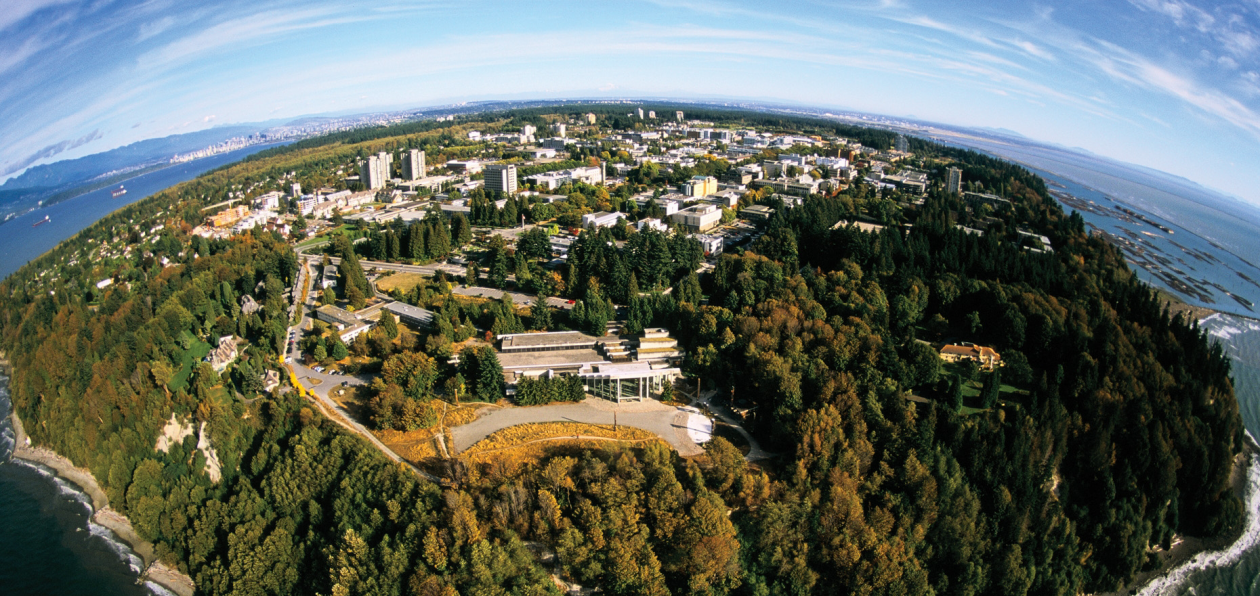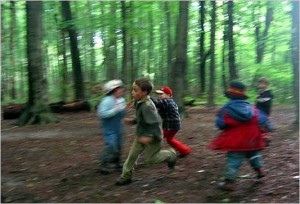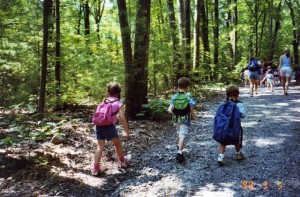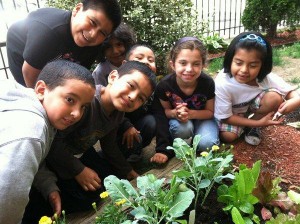This week I greatly enjoyed our outdoor experience, from the group teach to our walk and then doing the discussion outside I found it all to be very engaging. It was interesting to see how Isis, Meghan and Tiffany executed a scavenger that was both active and informative. I could see students having a lot of fun with the animal tag and the scavenger hunt and it is something I would never have thought of for PE! I thought the walk that we did was a nice way to spend the morning, and it encouraged me to consider how I would lead a class outdoors. It occurred to me during the walk that it’s easy to say you are going to take your class outdoors but is another thing to actually do it. It’s true that children these days don’t go outdoors as much as they used to and I am a true believer that just being outdoors enhances education, however to go outdoors for a class does require some extra planning. It made me think about how untrusting we are in this day and age, and how just thinking about taking a class outside brings up a lot of liabilities and hazards, of course there are ways of minimizing these but it is a real obstacle. In my teaching career I plan to embrace outdoor education, it’s beneficial for all of us and just the change in scenery often makes for an exciting learning experience.
Outdoor Education
This week was awesome! I loved the change of environment, especially since we got to go outside. Brianna, Jackie, Katy, and Lexi did an amazing job this week as it was shown that a lot of work was put into their team teach. From the start of class, I was engaged and excited. Not to mention, I noticed that I was much more energized throughout the day. Although at some point the teach teachers were all at different areas of the campus, they were still well-organized and on the same page with one another.
Outdoor education is clearly essential. It is important for teachers to incorporate outdoor education to their lesson plan. A good way to do this is by, know the surroundings and the community around your school. The girls this week definitely knew the campus and was taken to different parts of the school grounds where I never been to before. Although this is a PE class, I really enjoyed how the whole class was not based around physical literacy and sports, rather it was based around the outdoors. The way the four activities were set up was different. It involved teamwork, air and exploration, which are all aspects that students should use on a daily basis. Mary has brought up a point that I had never thought about on Friday. Outdoor education does connect to our Aboriginal learnings of the community and land. This may be a great way to incorporate Aboriginal education to your students while changing the environment. Students are only given a certain amount of time to spend outside and I think outdoor education is a valuable way for teachers to incorporate more of the outdoors in their lesson plan.
Well done this week ladies!
JULIE KERTESZ, REFECTION # 3 , 15. OCT. 14
Hello Everyone,
This week our group readings primarily discussed the benefits of flexibility in the classroom. Sienna was my group leader for the reading summaries and she demonstrated, and taught well, the importance behind flexibility in a lesson plan. We were reminded that although we might have a set goal in our lesson that it is OK to go off the track and be adaptable in our learning environments with our students. For instance, Steve did this at the end of our nature walk on Wednesday. Although he had planned for us to continue back to UBC in a particular direction out of the forest, he had recognized and listened to our request to continue our walk in the woods back to school; Steve altered his plan to fulfil our needs. As a class, we were able to spend more time in the forest and we adapted our end of class reading summaries to be conducted outside since we were short on time. I think, just like life, the ability to be flexible is so important for our personal well-being and also our cognitive development. Flexibility teaches us about internal spaces that we might be unfamiliar with. It allows us to see other sides to situations and also helps to decrease our stress-levels as we become more comfortable with adapting to new scenarios. Recognizing that humans are different in their needs and wants helps an educator to understand that lesson plans are not guaranteed ‘step by steps’ and rather, are more of a blue print for the ‘big idea’ and ‘set objectives’. Relative to our walk in the forest, nature shows us that a tree is meant to grow straight and tall; it has a goal to reach the sun. Looking closely at the underlying process that occurs in it’s soil, you can observe how flexibility is beneficial for the trees growth. Random stones and life in the soil create new scenarios that roots have to be flexible and adaptable for so that water is possible to obtain for growth. Taking this into the classroom, always be ready and open to taking your lesson off the track.
Assessment for Physical Literacy
Sorry this is being posted so late guys! Thought that us posting this on the group Facebook page was okay.
Thanks and hope it helps!
-Isis, Meghan and Tiffany
Week 5
This was a very fun class to participate in. Jenny, Zoe, and Vivian did an excellent job teaching about invasion games. My favourite part part was the dancing warm up. It was new and fun, thank you Vivian for being so willing to put yourself out there and teach us that. The progression of how each game became more and more complicated was awesome. It helped us to understand the basic fundamental moves of a sport. Teaching this way helps children to not get overwhelmed, and actually enjoy learning. It allows them to increase their physical literacy.
I was in Vivian’s group, and she did a great job in telling us about the reading. she was well informed and we had lots of discussion with in our group.
Overall it was a great class
Invasion games: weekly summary
What a great game and so fun. I enjoyed this game and exercise simply because it was a blast to play and one doesn’t need to be a great athlete to play it. Have a little luck and the desire to run and have fun and that is all you need. I used to work at a boys and girls club in Kamloops before i started the education pursuit of education. I found a game called nuts and squirrels where the game was simply four hoops and a bunch of balls to represent the nuts, the kids were the squirrels.
The kids couldn’t defend their hoops but they had to collect as many nuts as they could. There was one child who was very smart and really competitive and he saw that there could never be a definitive winner because without the ability to defend his hoop the kids would always be stealing his nuts. He was so angry that he stomped off and refused to play saying that this was a dumb game because there would never ever be a winner. He wrote me an essay titled “this game of yours is so dumb.”
The point of this story is that while i knew there could never be a winner and it was a great way to run all the energy out of the kids, I didn’t expect this response. I forgot how competitive our society can be and that some will always expect an outcome of their actions to measure against. I asked him to give the game another chance without expecting to win, to just play the game for fun, the second time he enjoyed the game and he told me a number of times that there didn’t need to be a winner, that sometimes a game is just a game.
Julie Russell’s Movement Journal #3 October 14th
It seems unanimous that having physical education classes outside is favoured. I agree. People need fresh air. People need sunshine. These are hard to get when we are boxed up all day. And when those people are children, I think being outdoors is more needed.
It’s funny because though there is a consensus that being outside is needed and wanted, it seems that going outside for classes (including P.E. class) is not a daily thing in a lot of schools/classes. I guess the thought is that things have to get done. I guess it’s easier to keep 25 kids in a boxed area. I guess sometimes it’s too cold or too hot.
I think it will take effort and planning to create the time to take a class outside. A friend of mine teaches grade 6. He loves the outdoors and has taken his students to do the Grouse Grind several times. He often instagrams photos of his class reading outside. He has even posted photos of his entire class with their desks outside. I think the children appreciate his effort and planning to do this. And I think it is something I am going to have to think about as a teacher. How am I going to implement this time to be outside? How can we learn outside? What things could we do outside? And, like Steve was getting us to do, where/what places can we use to do these things?
Thank you to the scavenger hunt group for showing us another way to do P.E! It was fun, active and involved collaboration.
Oct. 14th. Movement Journal #3. Outdoor Education.
Hi Everyone,
First of all, hats off to the Outdoor Education Team Teach last week. What a great job at taking our learning outside and having lots of fun getting active in the fresh air and sunshine!
I have been thinking a lot about outdoor activity lately. I have my practicum at an elementary school in West Vancouver and have been assigned to the kindergarten class. As the “little ones” at the school they have an assigned playground where there are several swings and climbing structures and such traditional items. However, I have noticed that every time they are excused for recess and lunch they run off to the area of the playground that borders a natural forest. It has lots of trees and a more rugged terrain and the students always spend their free play time there collecting rocks and swinging from tree branches. No one seems to be interested in playing in the structured playground area.
It led me to think about how much kids just love to be outside! Rain or shine they want to naturally explore and engage with others and the environment. So, I have been thinking about others ways that I could engage the kindergarten class in outdoor learning. What first came to mind was group mini hikes, as West Vancouver has lots of beautiful easy nearby trails, that would be good for younger children. There are also beaches and small lakes and waterfalls too. What a great way to also incorporate some learning about ecosystems and sustainability. But, while these ideas seem fun I am still unsure how I can organize transport and extra adult supervision and what types of legal formalities I am required to complete. As this task seems a little daunting, I will require clarification from my school advisor. Perhaps, these types of hurdles are what inhibit some teachers from planning outdoor education excursions?
Therefore, I thought I would start small. We have a beautiful field at my practicum school where I thought we could do some fun activities, but also perhaps some lessons. What about literacy outdoors? Reading and drawing outside incorporated into some type of physical activity that pertains to the literacy might work. For example, reading a story about the environment and then finding leaves and flowers from a scavenger hunt around the field that the students can then draw or paste into scrapbooks. I also thought that in an effort to support the inquiry learner a community garden outside the classroom might be a fun project which marries physical components with lesson plan initiatives. Of course, as the weather worsens with the arrival of winter this might become a little tricker, but I think more simplistic outdoor concepts might be a good place to start.
I look forward to working towards these outdoor initiatives and engaging my students in finding out what they would like to do and what they would like to learn. I think there are many ways in which we can incorporate outdoor learning into our classroom teachings and I hope to do lots of it soon!
Amy – October 14 – Reflection
I really enjoyed this week’s outdoor class. You don’t notice how much exercise you are getting when you’re having fun. Getting to do fun exercises on the way to the field (instead of simply walking or running) is a really creative way to motivate a PE class. From 2 days in practicum, I noticed a variety of class management techniques to keep students on track and most importantly, engaged. Before I would feel comfortable taking a class outside for class, I would need to ensure my students would be safe and to have those management skills in place.
I think the benefits of having PE classes outside are great. Our scavenger hunt outside was a great lesson plan for the class to experience. We were able to collaborate with other classmates, work together to find clues, and practice physical literacy. (And having a nice healthy snack was a definite plus!) This is something I would like to include in my future classes.
I also enjoyed exploring and taking a walk to the forest. We are extremely lucky to live in such a beautiful city surrounded by the mountains and ocean. I think it is important for teachers to take advantage of their surroundings and incorporate outdoors into PE classes. This would be a great method to motivate young students to value and appreciate physical education; and to instil a love for life long learning and physical education.
Looking forward to our next class!


Invasion Games and TGFU
While being introduced to the teaching game for understanding (TGFU) model, I began to think about the assessment techniques that value performance. Why is it that we assess learners on their performance when they are able to show an understanding of everything else?! The reality is that some children are not capable of learning a formal game of soccer and may never achieve success in their outcome or performance, but may appreciate the game of soccer and fully understanding the skills one needs to play the game. Therefore, I really like that we are moving away from techniques based approaches of learning sports and to a more concept based approach. However, its important for us, as educators, to be careful to not straight up tell the participants of the strategies and techniques that are involved in any game, and instead allow learners to discover them on their own. We will then facilitate their understanding, and once we allow them to figure out these skills, we will see an increase in their performance as well. I also like that this model is very much focused on the abilities and needs of the learner. This is represented in the last stage of the model in which the game is modified to adapt to the learner. Through observation, teachers can choose to exaggerate a move to make it more difficult or simpler. Finally, this model emphasis inclusion of all participants, which was nicely demonstrated by our group teach last week, in which no one was left out and competition was taken away. Great job Sam, Krystal, and Eric !



